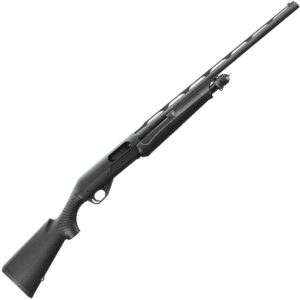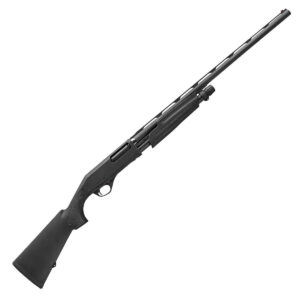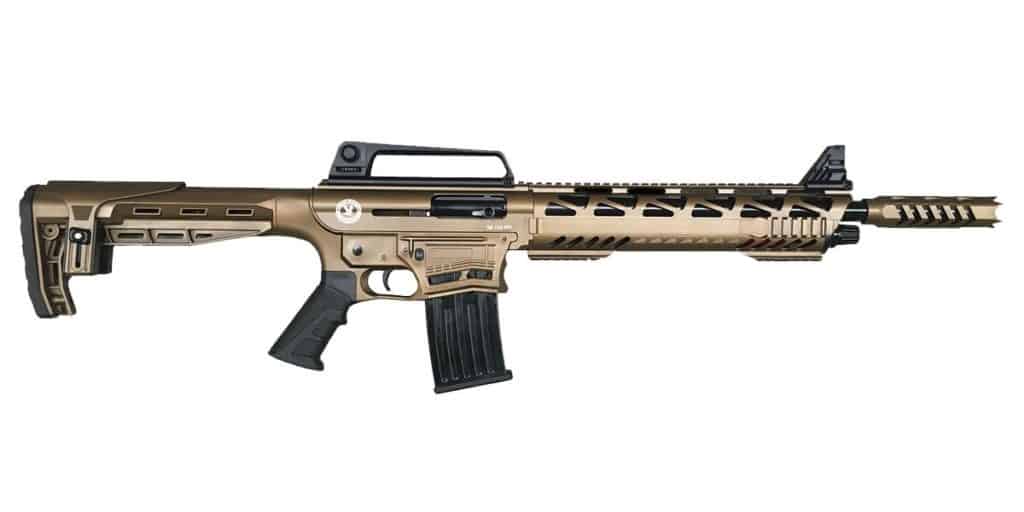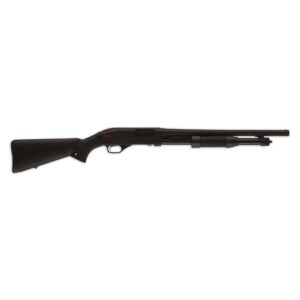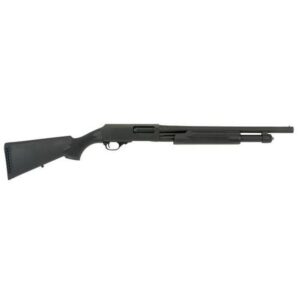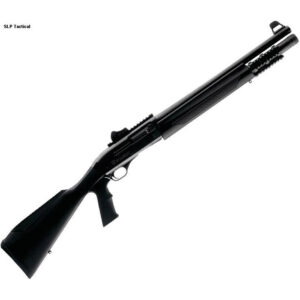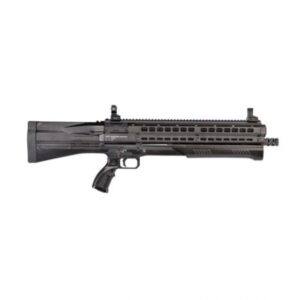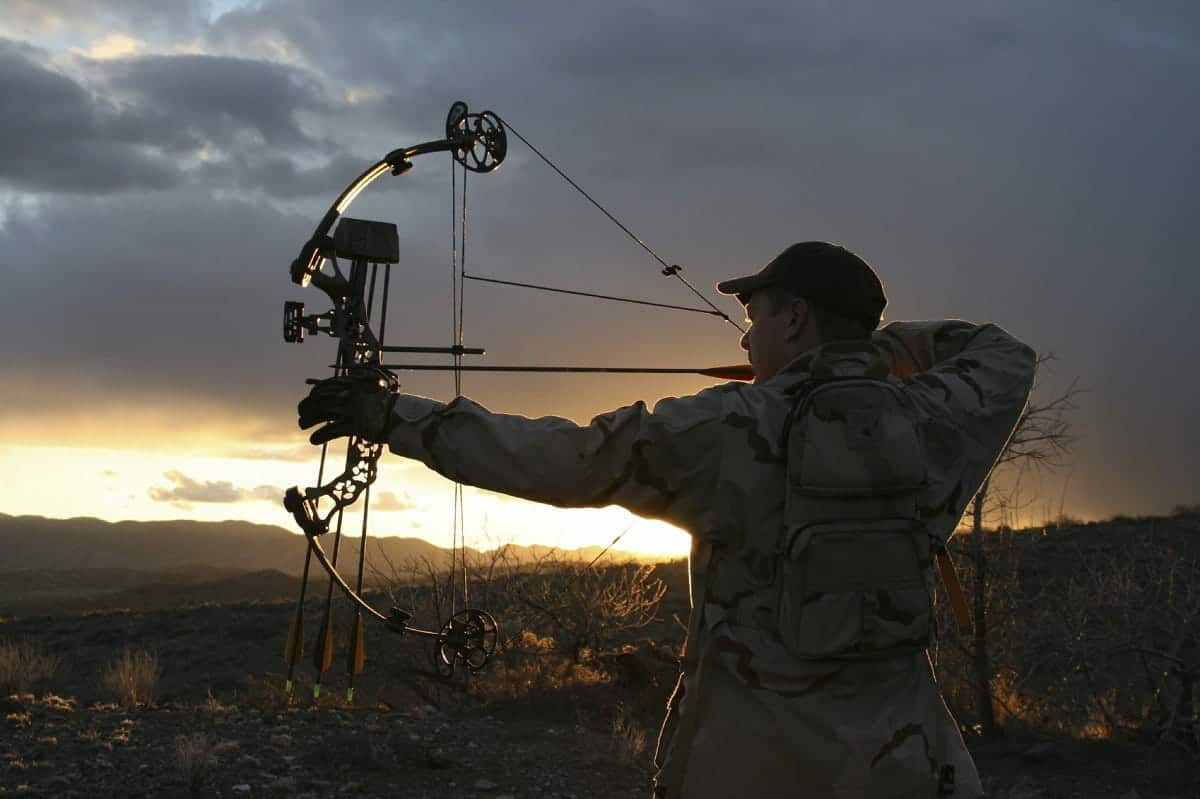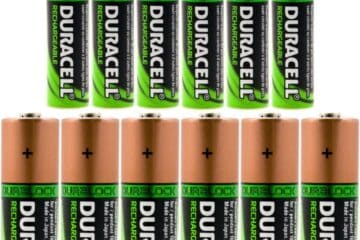We all deserve to feel safe in our homes. Whether you live in an urban center or rural countryside, you need to think about how you’ll protect your family and property from intruders. For responsible gun owners, there is little else that can provide the safety and security of a home defense tactical shotgun.
Our list of the 9 Best Home Defense Tactical Shotgun gives you all the details you need to choose a model that meets your needs. Also, be sure to read through our thorough Buyer’s Guide and Frequently Asked Questions sections to make sure you’re making as informed a decision as possible.
1. Benelli Nova
The Benelli Nova home defense tactical shotgun offers reliability you can depend on when your life depends on it. The shotgun’s extended magazines and super-fast pump-action place superior firepower in your hands for the maximum in downrange effect.
This tactical shotgun offers a modular design. An optional SteadyGrip™ stock can transform it into a turkey gun or you can mount a fully rifled slug barrel for tack-driving accuracy when deer hunting. It also features dual-action bars and a two-lug rotary bolt head that locks up steel to steel inside the barrel, making it rock solid to the core.
2. Stoeger Model P3000
The Stoeger Model P3000 is a reliable, trusted pump-action shotgun. Its precision-machined, anodized-aluminum receiver with rotary bolt increases this shotgun’s strength and guarantees flawless feeding and extraction.
This home defense tactical shotgun boasts a 12-gauge, 3-inch chamber and a rugged, checkered synthetic forend and stock with rubber butt pad that are impervious to inclement weather. It also features an 18.5-inch barrel for perfect balance, integral sling swivel studs to accommodate hands-free transportation and blade front sight for positive target acquisition.
3. TR Imports SE122 Tactical 12GA AR Shotgun, Bronze-SE122TACB
Click here for the lowest price
This AR style Shotgun is built on the SE122 frame, the SE122 Tactical shares important characteristics, including a strong but sensitive gas system that cycles reliably with a wide range of loads, and an action bar milled from solid steel.
This versatile gas system can reliably operate with the full range of commercial 2 3/4 and 3 inch shells. Combining proprietary engineering and renowned Turkish craftsmanship, the new SE122 Tactical may be the most reliable and versatile semi-auto ever produced. This a perfect Shotgun for home defense.
4. Winchester SXP Defender
Click here for the lowest price
The Winchester SXP Defender is a 20 Gauge tactical shotgun with an 18-inch barrel and a fixed magazine. It’s capable of handling buckshot or rifled slugs efficiently with its fully chrome-plated, fixed cylinder choked barrel for wide constriction.
This home defense tactical shotgun boasts non-glare metal surfaces with a tough composite stock and forearm. It also features a five-shot magazine (plus one in the chamber), a positive, deeply grooved forearm for control and stability, and an open choke that provides accuracy when using Foster-type slugs.
5. Remington 870 Express
Remington has set the golden standard for pump-action shotguns for more than five decades. The Model 870 Express is rugged and reliable. It is used widely by various law enforcement agencies and has been successfully tested under a vast range of environmental conditions.
This home defense tactical shotgun comes with weatherproof matte-black synthetic stocks. The shotgun’s receivers are milled from a solid billet of steel for strength and durability. It also features twin action bars that function to ensure smooth, reliable, non-binding action.
6. H&R Pardner
Click here for the lowest price
The H&R Pardner home defense tactical shotgun offers an affordable home defense option based on a proven design. With an 18.5-inch cylinder bore barrel and a lightweight, plain-black synthetic stock, it’s easy to maneuver in tight quarters.
This tactical shotgun comes in 12-gauge with a five-round capacity. It is chambered for 2.75-inch and 3-inch shells. It also features a grooved forend with sling swivel studs and bead front sights that come already drilled and tapped for scope base.
7. Mossberg 590A1
Click here for the lowest price
The Mossberg 590A1 is very similar to the ‘Just-in-Case’ model. Like it’s brother, it is a virtual duplicate of proven military and law enforcement pump-action shotguns. It is rugged, reliable, and thoroughly tested under extreme environmental conditions.
This home defense tactical shotgun offers an eight-shot magazine with up to four reloads ready in the weatherproof black synthetic Speedfeed stock. It features a parkerized, 20-inch cylinder-bore barrel and receiver that are topped with ghost-ring sights that help you get on target fast.
8. FN SLP Standard
Click here for the lowest price
This tactical shotgun is a 12-gauge with a six-shot magazine plus one in the chamber. It has a fixed magazine with a total barrel length of 18 inches. Standard models include an M1913 rail with precision front and rear ghost ring sighting system.
The FN SLP Standard home defense tactical shotgun offers the soft-recoil and reliability of a gas-operated auto-loading action. It boasts the Invector choke system to provide accurate performance with rifled slugs when needed. Finally, this tactical shotgun comes with two gas pistons designed to optimize payload delivery.
9. UTAS UTS-15
Click here for the lowest price
This tactical shotgun is a bold powerhouse that’ll meet all your home defense needs. It measures just 28.5 inches from butt plate to muzzle to facilitate quick, accurate aiming in close quarters. It’s also capable of firing 2.5-inch, 2.75-inch, or 3-inch magnum shells.
The UTAS UTS-15 home defense tactical shotgun comes with dual seven-round magazines that feature automatic alternating or selectable feed, snap-open loading ports, and retractable magazine followers. It also boasts a Picatinny top rail that supports a wide range of modular accessories.
—
Buyer’s Guide
More than 2 million home burglaries are reported each year in the United States and home without security systems are up to 300% more likely to be broken into (2). Accordingly, a home defense tactical shotgun can help to deter thieves and burglars that are looking for easy targets.
Choosing a tactical shotgun that suits your needs, however, requires careful consideration of a variety of factors. Some shotguns are best used for other purposes that don’t include home defense. To help you choose the proper home defense tactical shotgun, our Buyer’s Guide will focus on these important differentiators: pump-action vs other types, gauge, barrel length, capacity, and safety.
Pump-Action vs. Others
Pump-action shotguns are fairly easy to use, which makes them a good choice for new users. You simply insert shells into the magazine tube and, once it’s full, the user just needs to rack a shell in the chamber before firing. After firing, you must once again rack to eject the spent shell and load another into the chamber.
Pump-actions are super reliable options for home defense because they don’t rely on any mechanical action. Their only pitfall, however, is the fact that second and third shots can only be made as fast as the user can rack the firearm, so beginners should practice this action well before they have to use it for self-defense.
There are also three other main types of shotguns: double-barrel, bolt action, and semi-automatic. Double barrel shotguns are great for home defense because they only hold two shots before you need to reload. Many also boast a dual trigger, which offers the possibility of firing both shots at once when panicked.
Bolt-action shotguns are great for hunting because many feature rifled barrels that increase accuracy over a long distance. However, the amount of time that you’ll need to actuate the bolt for each shot presents a considerable risk in a home defense situation.
Semi-automatic shotguns give the user the ability to fire follow-up shots faster than any of the other three options, which is why they’re gaining popularity in home defense. Like all firearms, semi-automatic shotguns require regular cleaning and, when compared with pump-action shotguns, they’re much more difficult to clean thoroughly.
Gauge and Shell Caliber
The gauge of a shotgun refers to the diameter of the inner bore of the barrel. The most common gauges used for home defense are the 12-gauge and 20-gauge. There are also 10, 16, 28, and .410 gauge shotguns out there, but more than 50% of all American-sold shotguns are 12-gauge.
When it comes to home defense, 12 and 20-gauge are both great options. The main difference between the two is in recoil. Generally, a 20-gauge shotgun will have less recoil than a 12-gauge, which makes these a better option for individuals with smaller body types.
When it comes to shells, you can either shot-shells or slugs. The former offer an outer shell that contains numerous small pellets. These pellets will spread out over a wider path when fired, increasing the odds of hitting your target.
In a home defense scenario, slugs can easily punch through walls and continue on to hit unintended targets. They are a great option for deer and elk hunting, but not so much for the confines of a home. This makes shot-shells the ideal ammunition for home defense.
Barrel Length
Barrel length primarily comes into play when it comes to accuracy. A longer barrel will provide greater accuracy over longer distances. Shotguns with barrels in the 24 to 36-inch range are typically used for hunting in wide-open spaces.
Shotguns with shorter barrels tend to spread the shot wider and, as a result, increase the likelihood of hitting targets in tight spaces. A shorter barrel, in the range of 18 to 21 inches, will also make your shotgun easier to maneuver in these types of spaces. This is why many home defense tactical shotguns have shorter barrels.
Sights
The three most common sights for shotguns are bead sights, rifle sights, and ghost ring sights. All three server unique purposes and it’s really up to the user to decide what he or she prefers. But let’s take a minute to highlight some of the pros and cons of each.
Bead sights are typically factory-issue and certainly the most common of the three. The ‘bead’ is located on the front of the shotgun and the user simply lines the bead up with their target to aim. This works great if you have good eyesight or use a magnifier to help with alignment. However, bead sights tend to be very difficult to use in low-light situations.
Ghost ring sights are the next step from bead sights. They attach to the rear of the shotgun and give you a thicker sight to align with your target. They are widely regarded as the easiest non-optical sights to use. Some ghost rings are sold in combination with an optical sight, which provides lighting inside the ring to allow for better aiming at night.
Rifle sights are the most complete option and generally provide the best accuracy. They generally come with front and rear sights that are both adjustable and they are also compatible with a wide variety of optic accessories that will only improve accuracy further.
Stocks
For all intents and purposes, we are going to focus this section on the material that shotgun stocks are typically made of. The two major types of stocks we’ll cover are classic grip stocks and pistol grip stocks. Your choice of stock can have a large effect on how comfortable you feel when using your shotgun.
Classic grip stocks are most often made from wood and contain a curved grip that aid in holding the shotgun. This grip also helps you keep the gun steady as you rest it against your shoulder and take aim. In general, classic grip stocks are rarely adjustable and can be quite long for the average user.
Pistol grip stocks, on the other hand, are quickly becoming more common in both tactical and recreational settings. They are typically made of a durable plastic polymer, which keeps the shotgun lightweight and still durable. Many law enforcement and military personnel like these grips because they allow the user to hold the shotgun with one hand. This keeps the other hand free to load more ammunition.
Frequently Asked Questions
If you’re reading this article, we’re quite sure you don’t take home defense or gun ownership lightly. Safety and proper operation are essential, but it’s also important to know as much as possible about the firearms you’ll be using. This Frequently Asked Questions section will help you expand your knowledge so that you can make the best choice possible for your family and your property.
What is a ‘rifled barrel’?
A rifled barrel has many helical (3) grooves inside the barrel’s bore. They are used with sabot slugs. These types of slugs have plastic sabots that make contact with the helical grooves of the bore. As the sabot slug is fired, the grooves cause the slug to spin as it leaves the barrel. Spinning stabilizes the slug and can drastically improve the accuracy of your shots.
What’s the difference between ‘birdshot’ and ‘buckshot’?
The main difference is the size of the pellets inside the shells. Birdshot (as its name suggests) tends to have smaller pellets that give your shots a much wider range. Buckshot, on the other hand, contains larger pellets that have a narrower range. The catch, though, is that buckshot tends to cause more damage at a farther range.
Do I need to purchase optics for my shotgun?
The answer is really up to you, but optics are primarily used to help you aim at your target. Fiber optic sights are typically used in daylight settings while tritium sights are primarily used at night. In the case of home defense, however, you may not have a whole lot of time to perfectly aim at your target. Because of this, an optical sight is not imperative for a shotgun that will primarily be used for home defense.
Why do you recommend 12 or 20-gauge shotguns for home defense?
The first reason we recommend these two is simply because they are the easiest to find. There are many options out there and many brands that make high-quality shotguns of these gauges. Other gauges, such as .410 and 28, are far too small to be useful for home defense purposes. The ammunition for 16-gauge shotguns can be very hard to find, and 10-gauge shotguns have very powerful recoil, which can cause pain after firing it just a couple times.
What is ‘choke’?
The term ‘choke’ refers to the constriction at the muzzle end of the gun that tightens the pattern of pellets. In turn, this gives the shooter a more effective range. Shotgun choke is typically measured relative to the bore diameter, but it can only definitively be determined using pattern plates and in relation to a specific cartridge (4).
To elaborate, different chokes will obviously produce different results with common ammunition. There are removable and fixed chokes. Instead of a choke, many tactical shotguns have a cylinder bore, which encourages a wider spread of ammunition.
What does it mean when it says a barrel is ‘parkerized’?
‘Parkerizing’ is a term that refers to how metal is finished. It is a method of protecting a steel surface from corrosion and increasing its resistance to wear through the application of a chemical phosphate conversion coating. It is a common technique used on firearms today and is considered much more effective than an earlier chemical conversion coating method known as bluing (5).
Why is a shotgun preferable to a handgun for home defense?
Consider this statistic: nearly 75 percent of all bullets fired (from a handgun) by trained police miss their mark (6). By spreading pellets out over a larger area, a shotgun significantly increases your odds of hitting the target. Furthermore, a shotgun offers much more stopping power than a typical handgun, which means you not only have a better chance of hitting your target, but you also have a higher likelihood of that hit being highly effective.
Can you go into more detail on the different gauges?
Sure! As we mentioned earlier, there are six common shotgun gauges. They are, from smallest to largest, the .410 bore, and 28, 20, 16, 12, and 10 gauges. We’ll provide a brief bio on each.
The .410 bore is among the smallest shotgun shells ever made. Its primary use is for hunting small game. The 28-gauge is a small shotgun shell. The shotguns that fire 28-gauge are very small and lightweight. They are most commonly used in hunting pheasant and other types of upland birds.
The 20-gauge is the second most common in the United States. It is still pretty lightweight and has significantly less recoil than 12-gauge, which makes it popular for hunting and target shooting. It is mostly used for bird hunting.
The 16-gauge is pretty uncommon these days. Some view it as the ‘jack-of-all-trades’ of shotguns, but 16-gauge ammunition is becoming increasingly difficult to find. The 12-gauge is far and away the most common. Although 12-gauge shotguns can be heavier, recent improvements in technology and materials manufacturing are remedying that issue. They are excellent for hunting waterfowl, turkey, and a number of other animals, as well as for home defense.
The 10-gauge is another shell that is rare to see these days. The 10-gauge shotgun used to be very popular in waterfowl hunting, but they are very heavy and those improvements we mentioned earlier in 12-gauge shotguns have impacted the popularity of 10-gauge.
Summary
A home defense shotgun is just the deterrent you need to make potential burglars and thieves think twice. We feel that it’s always better to be prepared rather than to be surprised when it comes to home defense. We hope you’ve found this article useful and we wish you the best of luck choosing the right home defense tactical shotgun for you.
